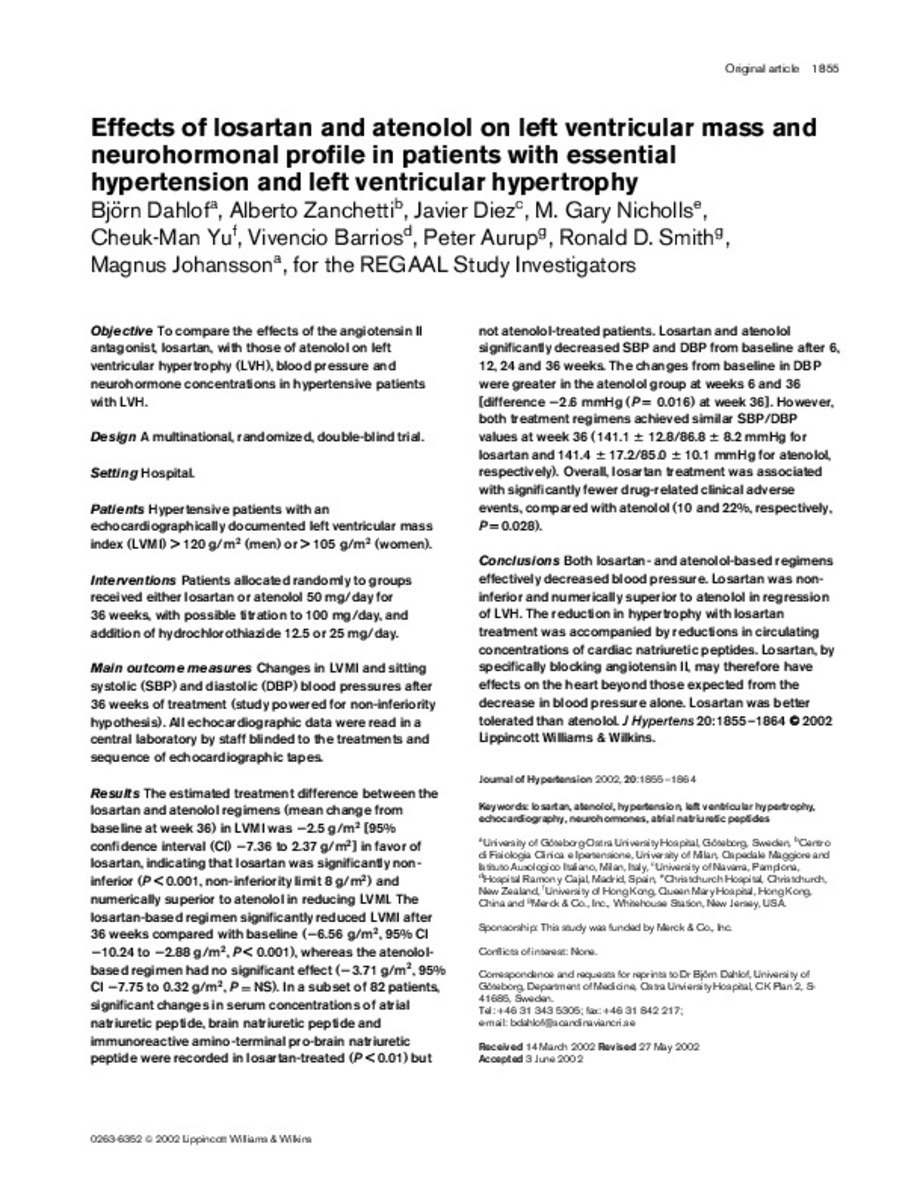Effects of losartan and atenolol on left ventricular mass and neurohormonal profile in patients with essential hypertension and left ventricular hypertrophy
Palabras clave :
Losartan
Atenolol
Hypertension
Left ventricular hypertrophy
Echocardiography
Neurohormones
Atrial natriuretic peptides
Fecha de publicación :
2002
Editorial :
Lippincott, Williams & Wilkins
Cita:
Dahlof B, Zanchetti A, Diez J, Nicholls MG, Yu CM, Barrios V, et al. Effects of losartan and atenolol on left ventricular mass and neurohormonal profile in patients with essential hypertension and left ventricular hypertrophy. J Hypertens 2002 Sep;20(9):1855-1864.
Aparece en las colecciones:
Estadísticas e impacto
0 citas en

0 citas en

Los ítems de Dadun están protegidos por copyright, con todos los derechos reservados, a menos que se indique lo contrario.










